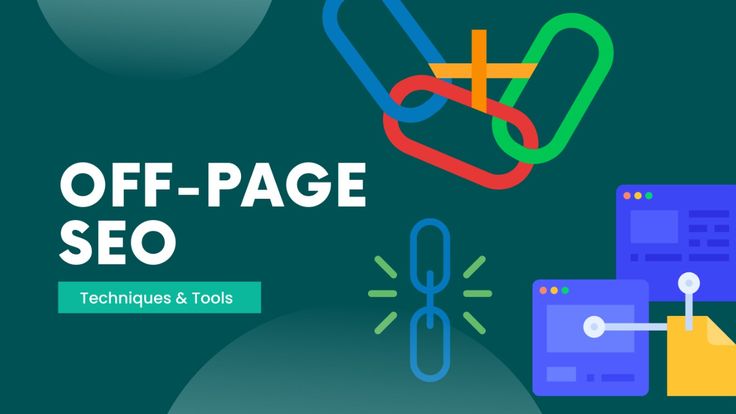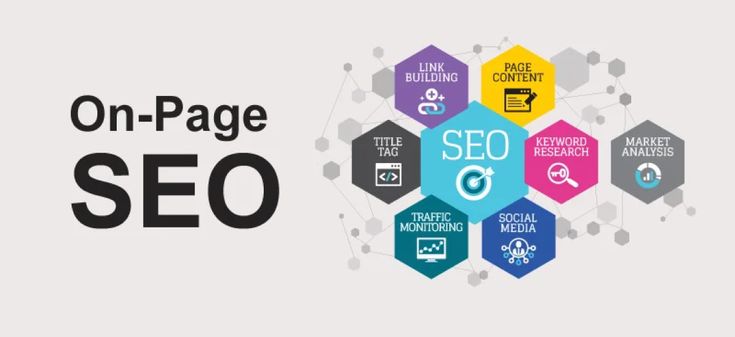How to Start SEO Optimization from Scratch
SEO (Search Engine Optimization)
1. Introduction
In the current digital age, being found online is more important than just having a website. Search engine optimization or SEO can help with that. It is the process of optimizing your website so that it appears at the top when people search for related terms on Google or other search engines.
Whether you are a small business owner, a blogger or someone who wants to grow an online presence, SEO is one of the most affordable and powerful tools you can use to increase traffic and attract potential customers.
But here’s the challenge:
SEO has changed a lot in the past few years. What worked a few years ago may not work now. In 2025, with Google’s improved algorithms, AI-driven content and increased competition, SEO will require a new approach and up-to-date strategies to get started from the beginning.
This blog post is a complete beginner’s guide to SEO in 2025. You don’t need any technical background. I'll tell you:
- what SEO really means,
- how search engines work,
- what steps you can take right now, and
- what tools and strategies will help you succeed.
By the end of this guide, you'll have a clear roadmap to start your SEO journey with confidence - even if you don't know anything right now.
2. Understanding the Basics of SEO
✅ What is SEO (Search Engine Optimization)?
SEO stands for Search Engine Optimization. It is the process of improving your website's visibility in search engine results pages (SERPs) such as Google, Bing or Yahoo.
When someone searches for a topic related to your website, SEO helps your site appear higher in the results - which means more people will click through and visit the site.
SEO attempts to boost organic (unpaid) traffic by improving your website's relevance, usability and dependability to both users and search engines.
✅ Types of SEO
SEO can be divided into three main categories. Each plays an important role in improving your site's performance and visibility:
🔹 1. On-page SEO
This refers to all optimizations performed on your actual website content and structure. This includes:
-
Writing keyword-rich, high-quality content
-
Using proper titles, meta descriptions, and headings (H1, H2, etc.)
-
Optimizing images (alt tags, size, filenames)
-
Creating a clean URL structure (e.g. example.com/seo-tips instead of example.com/page?id=123)
-
Internal linking (linking your pages to each other)
📌 Think of on-page SEO as everything you directly control on your site.
🔹 2. Off-page SEO
Off-page SEO is about building your website’s reputation and authority through external sources, such as:
-
Getting backlinks (links from other websites to your website)
-
Sharing your content on social media
-
Getting mentions on blogs, forums, directories or review sites
-
Online PR and influencer marketing
📌 Consider off-page SEO as a way to establish your website’s credibility and trust outside of your platform.
🔹 3. Technical SEO
This focuses on how easy it is for search engines to crawl and index your website. Poor technical setup can prevent search engines from finding or ranking your pages, even if your content is excellent. Important technical considerations are:
-
Fast loading speed
-
Mobile-friendliness (responsive design)
-
Clean website structure and navigation
-
Using HTTPS (SSL certificate for secure browsing)
-
XML sitemap and robots.txt file setup
Fixing crawl errors or broken links
📌 Think of technical SEO as the backbone of your website’s performance and searchability.
Click on 'Technical SEO' for a complete guide
3. Keyword Research
💡 What is keyword research?
Keyword research means finding the words and phrases people type into Google when they search for something.
For example:
If someone searches for “best laptops for students in 2025,” that’s a keyword you might want to target on your blog or product page.
✅ How to Do Keyword Research in 2025 (Step-by-Step)
Step 1: Understand your audience
-
What are they looking for?
-
What problems are they trying to solve?
Step 2: Use free tools
Some of the best tools in 2025:
-
Google Trends – See what’s trending right now.
-
Ubersuggest – Free keyword ideas and search volume.
-
AnswerThePublic – Shows common questions people ask.
-
Keyword Surfer (Chrome Extension) – Shows keyword volume directly in Google.
Step 3: Focus on long-tail keywords
Short keywords like:
“laptop”
Use long-tail keywords like:
“best budget laptop for graphic design in 2025”
These are easy to rank for and match real user intent.
Step 4: Check keyword difficulty
Choose keywords that:
-
Have low to medium competition
-
Have good monthly search volume
-
Are relevant to your content
Step 5: Organize keywords by intent
There are 4 types of search intent:
-
Informational (e.g., “how to do SEO”)
-
Navigational (e.g., “LinkedIn login”)
-
Commercial (e.g., “best phone under 30000”)
-
Transactional (e.g., “buy iPhone 15 online”)
4. Why is content so important?
Search engines like Google, Bing, and even AI assistants care about one thing above all:
➡️ Is your content helpful to the user?
Good content:
-
📈 Ranks higher on search engines
-
👥 Can keep people on your site longer
-
🔗 Gets more shares on social media
-
🧭 Build trust and authority in your niche
✅ What does “good content” mean in 2025?
In today’s SEO environment, good content equals helpful content.
This means that your blog, article, or product page should:
-
Solve a real problem
-
Be easy to read and understand
-
Contain accurate and up-to-date information
-
Quickly answer user questions
-
Include visuals, lists, and examples
🖋️ Types of content that perform well
Blog posts and how-to guides
-
FAQs and lists
-
Case studies or success stories
-
Infographics and charts
-
Video and audio content
-
AI-enhanced interactive content (like quizzes, tools, etc.)
🧾 Content writing tips for SEO (2025 style)
-
Start with user intent
→ What are they trying to learn, buy, or understand?
-
Write in a natural tone
→ Don’t keyword stuff – keep it conversational.
-
Use headings and subheadings
→ Make it easy for search engines and readers to navigate your page.
-
Add visuals
→ Images, videos, charts = higher engagement.
-
Keep your content updated
→ Old content drops in rankings over time.
📌 Real Talk: Google loves “E-E-A-T”
Google places a lot of emphasis on E-E-A-T in 2025, which stands for:
-
Experience
-
Expertise
-
Authority
-
Trustworthiness
5.🔍 Keyword Research Tools
1. Ubersuggest
Find keyword ideas, volume and SEO difficulty.
Also shows competitor data and content ideas.
https://neilpatel.com/ubersuggest/
2. Google Keyword Planner
Great for finding keywords directly from Google.
Requires a free Google Ads account.
https://ads.google.com/home/tools/keyword-planner/
3. AnswerThePublic
Find what questions people ask about your topic.
Very helpful for blog content planning.
https://answerthepublic.com/
4. Keyword Surfer (Chrome Extension)
See keyword search volume and suggestions directly in Google search results.
Lightweight and friendly for beginners.
https://keywordtools.io/surfer/
📈 Website Performance & Analytics
5. Google Search Console
Track how your site performs in Google Search.
Find out which pages are ranking, get index reports, and fix issues.
https://search.google.com/search-console
6. Google Analytics 4 (GA4)
See who’s visiting your site, where from, and what they do.
Helps improve user experience and conversions.
https://analytics.google.com/
🛠️ On-page SEO tools
7. Yoast SEO (for WordPress)
Helps optimize titles, meta descriptions, readability, and more.
Beginner-friendly plugin.
https://yoast.com/
8. Rank Math (Yoast alternative)
Another powerful SEO plugin with more features in the free plan.
https://rankmath.com/
9. SEO Minion (Chrome extension)
Analyze on-page SEO, check broken links, preview SERPs, etc.
Great for quick checks.
https://seominion.com/
10. Google’s SEO Starter Guide
Directly from Google. Covers all the basics in a simple way.
https://developers.google.com/search/docs/fundamentals/seo-starter-guide
11. Moz Beginner’s Guide to SEO
One of the best beginner resources online.
Explains everything step-by-step.
https://moz.com/beginners-guide-to-seo
12. Ahrefs YouTube Channel
Free tutorials on keyword research, SEO audits, and traffic strategies.
https://www.youtube.com/@ahrefs
6. ❌ 1. Keyword stuffing
What it is: Using the same keyword unnaturally many times.
Why it’s bad:
Google can penalize your content. It also makes your writing sound robotic.
✅ What to do instead:
Use keywords naturally and include related words (LSI keywords) to keep the content readable.
❌ 2. Ignoring the mobile experience
What it is: Not making your website mobile-friendly.
Why it’s bad:
In 2025, more than 70% of users will browse on mobile. Google now uses mobile-first indexing, so a poor mobile layout can hurt rankings.
✅ What to do instead:
Use responsive design
Avoid popups that block content
Check mobile performance with the Google Mobile-Friendly Test
❌ 3. Not updating old content
What it is: Leaving old blog posts or product pages untouched for years.
Why it’s bad:
Google needs fresh, accurate content. If your information is out of date, you lose traffic and rankings.
✅ What to do instead:
Refresh old posts with new stats, images, or sections
Add “Updated [date]” to your content
Re-share updated posts on social media
❌ 4. Buying backlinks or using black hat SEO
What it is: Paying for fake backlinks, spamming comment sections, or using shady tricks to rank faster.
Why it’s bad:
Google’s algorithms are smart in 2025 – black hat SEO can get your site deindexed (removed from search results).
✅ What to do instead:
Focus on earning natural backlinks by creating valuable content
Build relationships in your field
Only use white-hat SEO techniques
❌ 5. Skipping technical SEO
What it is: Not fixing things like broken links, slow speeds or missing meta tags.
Why it’s bad:
If your site has technical issues, even great content won’t rank well.
✅ What to do instead:
Use Google Search Console to find errors
Compress images, improve loading speeds
Add alt text, fix redirects and create sitemaps
❌ 6. Ignoring search intent
What it is: Creating content that isn’t relevant to the user’s search query.
Why it’s bad:
If someone wants a list of tools and you give them a history lesson, they’ll leave your page — increasing bounce rate.
✅ What to do instead:
Understand whether the intent is informational, commercial, or transactional
Let your content address the user’s exact query
🎯 Final advice:
SEO takes time — and consistency. Avoiding these mistakes will help you build a strong foundation and get long-term results without penalties.
Frequently Asked Questions (F&Q) in SEO (Search Engine Optimization)
1. First of all, what is SEO?
Search engine optimization is called SEO. It is the process of increasing a website's performance on search engines like Google to increase organic (unpaid) traffic.
2. Why is SEO important?
SEO helps your website appear in front of the right audience when they search for relevant terms. Better rankings = more visibility = more visitors = more potential customers.
3. What are the types of SEO?
-
on-page SEO - Optimizing your website's content, keywords, titles, images, and other elements is known as on-page SEO.
-
Off-page SEO - Off-page SEO includes social media sharing, brand mentions, and backlink building.
-
technical SEO - Increasing a website's crawlability, mobile friendliness, and speed are all examples of technical SEO.
-
local SEO - Optimizing for local searches, like "restaurants near me," is known as local SEO.
4. What are keywords in SEO?
Keywords are the words or phrases people type into search engines. Using the right keywords in your content helps your page rank for those searches.
5. How long does it take for SEO to produce results?
SEO is a long-term approach. Depending on competition and effort, it can take three to six months (or longer) to see noticeable results.
6. What is a backlink in SEO?
A backlink is when another website links to your website. High-quality backlinks help increase your site's authority and rankings.
7. What is domain authority (DA)?
DA is a score (1-100) that predicts how well a website will rank on search engines. Higher DA usually means better ranking chances.
8. What differentiates PPC from SEO?
-
SEO is free and organic, but it takes more time.
-
Paid advertising that provides immediate visibility is called PPC (pay per click).
9. What are meta tags?
Meta tags (such as title tags and meta descriptions) are HTML tags that tell search engines about the content of your webpage. They affect click-through rates.
10. What is mobile SEO?
Optimizing your website to work well and load quickly on mobile devices, since most users search on their phones.
11. What is black hat SEO?
Techniques such as keyword stuffing, buying backlinks, or hidden text that try to trick search engines. This can result in penalties or bans.
12. What tools can I use for SEO?
Free tools include:
-
Google Search Console
-
Google Analytics
-
Ubersuggest
-
Yoast SEO (for WordPress)
-
AnswerThePublic
-
Ahrefs Webmaster Tools (free version)
"Behind every successful website is a strong strategy - get started today and make your digital goals a reality!"


